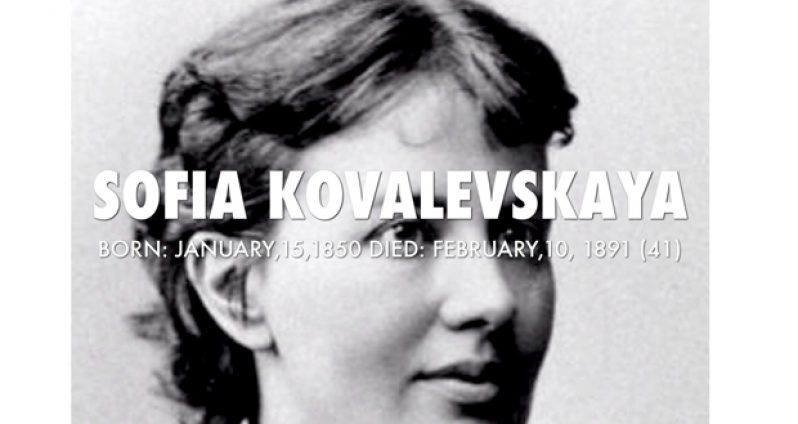-Was destined to become a woman of great strengths, and the contributions she made to mathematics promised to be enduring ones
“The meaning of these concepts I naturally could not yet grasp, but they acted on my imagination, instilling in me a reverence for mathematics as an exalted and mysterious science which opens up to its initiates a new world of wonders, inaccessible to ordinary mortals.”
Sofia Kovalevskaya (1850-1891) was destined to become a woman of great strengths, and the contributions she made to mathematics promise to be enduring ones. Sofia was attracted to mathematics at a very young age.
When Sonya was 11, the walls of her nursery were papered with pages of lecture notes on differential and integral analysis. Studying the wallpaper was her introduction to calculus.
Sofia wrote in her autobiography:
“The meaning of these concepts I naturally could not yet grasp, but they acted on my imagination, instilling in me a reverence for mathematics as an exalted and mysterious science which opens up to its initiates a new world of wonders, inaccessible to ordinary mortals.”
Sofia was forced to marry so that she could go abroad to study. Her father would not allow her to leave home to study at a university, and women in Russia could not live apart from their families without the written permission of their father or husband. At the age of eighteen, she entered a nominal marriage with Vladimir Kovalevski, a young palaeontologist.
In 1869 Sofia travelled to Heidelberg to study mathematics and the natural sciences, only to discover that women could not matriculate at the university. Eventually she persuaded the university authorities to allow her to attend lectures unofficially, provided that she obtain the permission of each of her lecturers. Professors considered her a gifted student and spoke about her as an extraordinary phenomenon .
By the spring of 1874, Kovalevskaya had completed three papers, each of these worthy of a doctorate. The three papers were on Partial differential equations, Abelian integrals and Saturn’s Rings.
In 1882 she began work on the refraction of light. She began to lecture there in early 1884, was appointed to a five year extraordinary professorship in June of that year, and in June 1889 became the first woman since the physicist Laura Bassi and Maria Gaetana Agnesi to hold a chair at a European university.
Although the Tsarist government had repeatedly refused her a university position in her own country, the rules at the Imperial Academy were changed to allow the election of a woman.
Sonya Kovalevsky has been described as the brightest star among all female mathematicians analysis is a permanent monument to her greatness. The Cauchy-Kovalevsky Theorem is at the foundation of most graduate courses in partial differential equations.
Her novel The Sisters Rajevski (based upon her own childhood) is a superb account of life among the intellectuals at a crucial period in Russian history.
In early 1891, at the height of her mathematical powers and reputation, Kovalevskaya died of influenza complicated by pneumonia.



.jpg)









